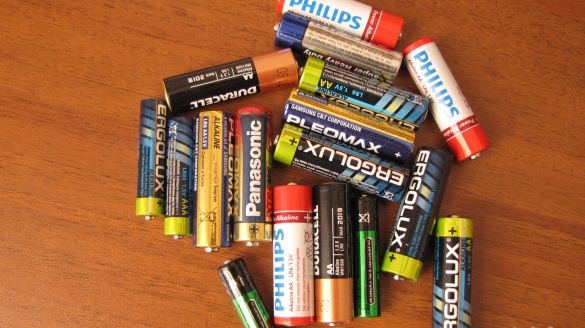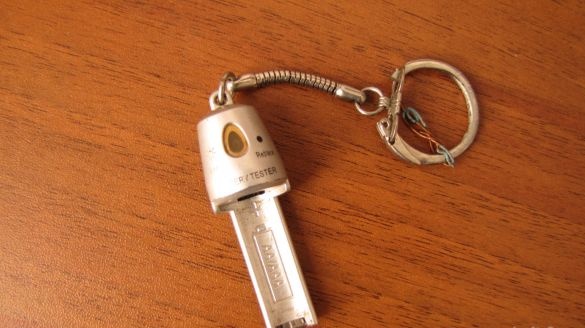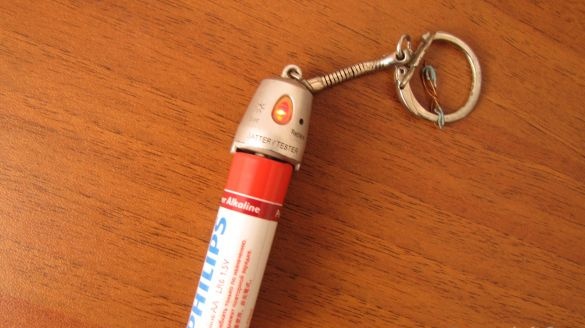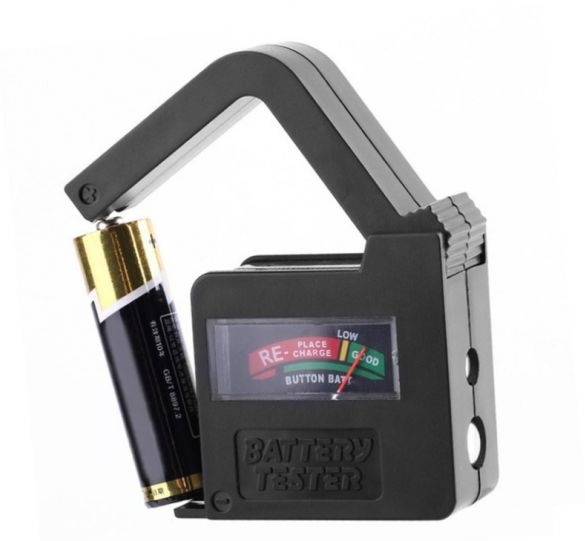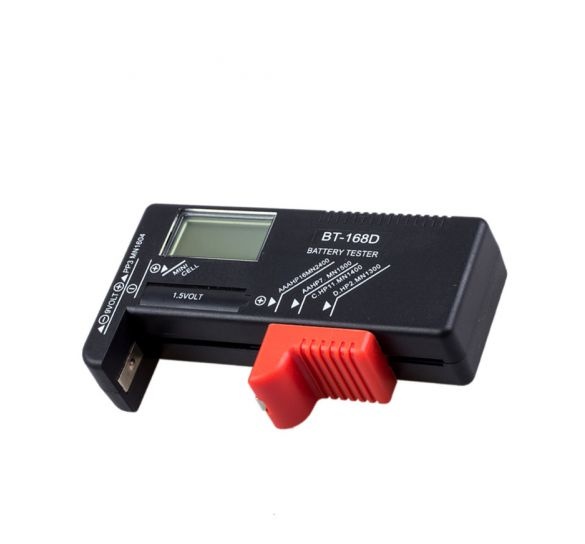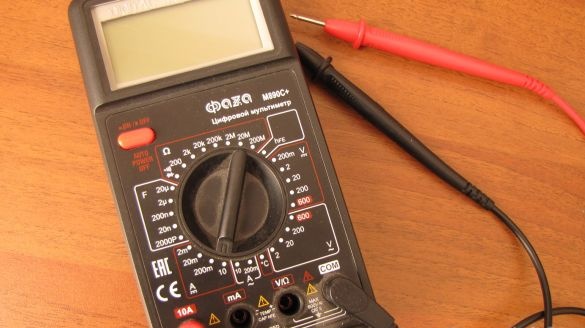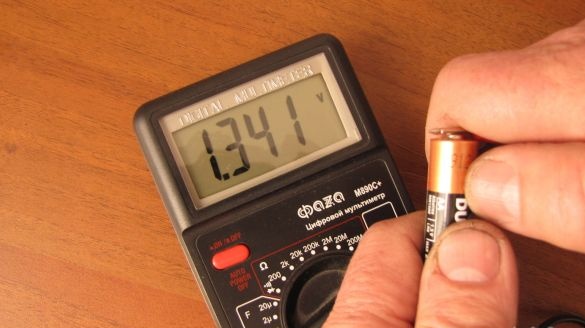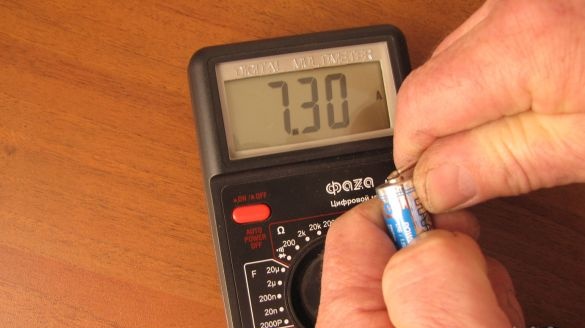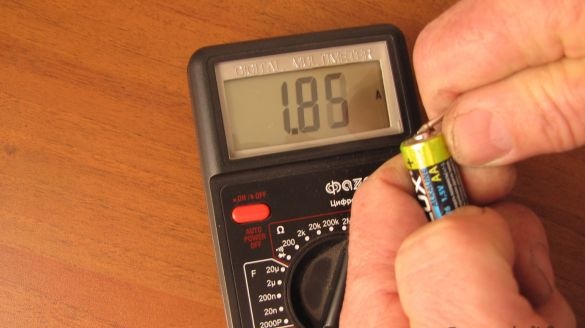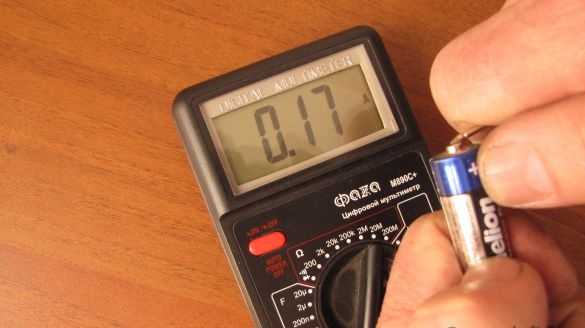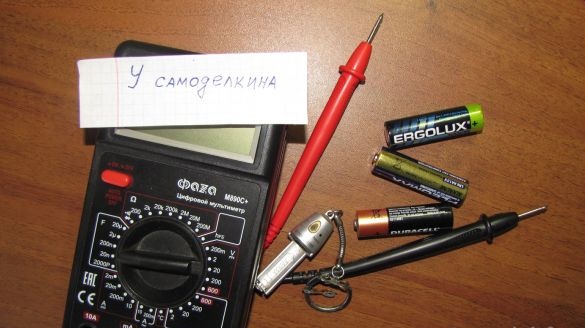Also.
Different devices that use batteries use different amounts of them. From one to several. And in those devices where there are more than one battery, the discharge of batteries occurs extremely unevenly in most cases.
Often it turns out that one battery “runs out”, and everything has to be removed from the device, because the device can no longer function normally, since the batteries are usually connected in series and damage to one of them entails a failure of the entire power supply chain.
Someone throws away the used batteries right away, but most of them nevertheless put them in a secluded corner and this is justified, because if they are sorted properly, they can still be used in devices “lower”.
We collect all the batteries that we find, regardless of size and shape, to arrange something like a test pipeline or "casting", as you like.
In any market, a large number of various testers for testing batteries are sold. For example, such.
LED tester for batteries.
Such a tester is completely useless, it cannot give any idea of the remaining battery charge, and the LED in it will glow even on a completely unsuitable battery. It is suitable only as a keychain.
The LED lights up on a discharged battery.
The arrow testers, as in the photo, can give approximate information about the validity of the batteries (either they are suitable or not) and without any guarantee of the quality of the measurements.
A more advanced digital tester, the readings of which can already be trusted a little, but it also costs much more and costs closer to a multimeter.
Well, the most accurate data on the state of your batteries can be given to you by a multimeter, even if not professional and cheap, bought on the market, but it is better if it has the function of measuring current up to 10 amperes, as in the photo below.
Not a very cheap multimeter and is suitable for testing batteries not only in voltage, but also in current.
To begin testing our batteries, we will conduct a preliminary “casting”. Remove all batteries with electrolyte leakage and dented cases.
To pre-sort the batteries into workers and scrap, put the switch on the voltage measurement, at 2 volts. And depending on the readings of the multimeter, we sort.
The device shows 0.8 volts or less in scrap, without any pity.
From 0.8 to 1.1 - while we postpone it to a separate place, in the next article and video I will tell you what you can do next.
If the voltage is 1.1 - 1.2 volts - it will serve a little more, for example, in an LED flashlight with low-power LEDs or some not very important remote control, but you need to consider that the remote control will work at a reduced distance.
Batteries with limited usefulness require constant monitoring, because electrolyte can leak out of them at any time and damage the device in which they are located. For this reason, such batteries are not recommended to be left in the devices for a long period.
Such batteries should be stored in a plastic container, in order to avoid electrolyte leakage.
Limited battery life.
1.2 to 1.35 volts - will last longer.
From 1.35 volts and above - can be used without restrictions.
Sorting the batteries by voltage cannot accurately answer the question of the degree of charge remaining in the battery and gives an idea of only one parameter, the voltage of this element.
You can much more accurately determine the state of the battery by measuring the current that the battery can give. This parameter is much better characterizes the ability of the battery for future use.
To measure this, switch the multimeter to the mode of measuring current up to 10 amperes (if the device has this function) and rearrange the probe into the corresponding socket. We attach probes to the battery for a maximum of 2 seconds (the battery actually works in short circuit mode and this is very harmful for it). And watch the current.
New battery.
Limited fit and can work in the remote control.
To the side to determine her future fate.
Even the most “dead” battery can be “revived” for a short time if its body is well wrinkled. But the danger of leakage of electrolyte from this battery increases many times and therefore you can use this method only in the most extreme case, when there is no other way, for example, on fishing.
You can also “cheer up” the battery for a short time if you warm it up, but carefully. Remember that these actions lead to an increased risk of electrolyte leakage, and therefore damage to the device in which these "lively" batteries are located, because the electrolyte is a very caustic substance and very quickly corrodes various structural materials.
The battery can be charged, but this is the topic of the next publication.
Watch a battery test video that clearly illustrates the advantage of sorting batteries by current.
Good luck with your business.

